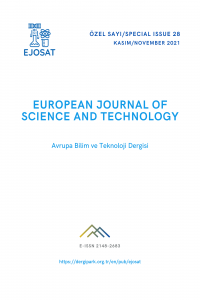Abstract
This paper presents dynamic modification parameters of the Adaptive Neuro-Fuzzy Inference System (ANFIS) using the Particle Swarm Optimization (PSO) algorithm. In the proposed ANFIS_PSO, each particle dynamically adjusts its weight to the optimal states of the particles using a nonlinear fuzzy model. Tests of the model were performed using the "Signal-Time Series". The methods are tested simultaneously until the best method to solve the problem is found. The proposed model takes advantage of PSO to tune ANFIS parameters by minimizing mean square error (MSE), root mean square error (RMSE), R-Squared (R2) and Mean Absolute Error (MEA) metrics. The main contribution is a strategy for dynamically finding the best result, which identifies methods for solving a given problem using different performance metrics depending on the problem. The proposed structure's results were compared with several machine learning algorithms. Simulation results show the effectiveness of the proposed algorithm.
References
- Basser, Hossein et al. 2015. “Hybrid ANFIS-PSO Approach for Predicting Optimum Parameters of a Protective Spur Dike.” Applied Soft Computing 30: 642–49. http://dx.doi.org/10.1016/j.asoc.2015.02.011.
- Blum, Christian, Spanish National, and Xiaodong Li. 2008. Swarm Intelligence Swarm Intelligence.
- El-Hasnony, Ibrahim M., Sherif I. Barakat, and Reham R. Mostafa. 2020. “Optimized ANFIS Model Using Hybrid Metaheuristic Algorithms for Parkinson’s Disease Prediction in IoT Environment.” IEEE Access 8: 119252–70.
- Guillaume, S. 2001. “Designing Fuzzy Inference Systems from Data: An Interpretability-Oriented Review.” IEEE Transactions on Fuzzy Systems 9(3): 426–43.
- Hodzic, Adnan. 2016. “A Novel Approach for Face Recognition Based on ANN and ANFIS.” (September 2015).
- James Kennedy and Russell Eberhart. 1995. “Particle Swarm Optimisation.” Proc. of the IEEE Int. Conference on Neural Networks 4: 1942–48.
- Kundapura, Suman, and Arkal Vittal Hegde. 2021. “PSO-ANFIS Hybrid Approach for Prediction of Wave Reflection Coefficient for Semicircular Breakwater.” ISH Journal of Hydraulic Engineering 27(2): 135–43. https://doi.org/10.1080/09715010.2018.1525688.
- Ozkaya, U., and Seyfi, L. 2018. “A comparative study on parameters of leaf-shaped patch antenna using hybrid artificial intelligence network model”s. Neural Computing and Applications, 29(8), 35-45.
- Rini, Dian Palupi, Siti Mariyam Shamsuddin, and Siti Sophiayati Yuhaniz. 2016. “Particle Swarm Optimization for ANFIS Interpretability and Accuracy.” Soft Computing 20(1): 251–62. http://dx.doi.org/10.1007/s00500-014-1498-z.
- Sada, S. O., and S. C. Ikpeseni. 2021. “Evaluation of ANN and ANFIS Modeling Ability in the Prediction of AISI 1050 Steel Machining Performance.” Heliyon 7(2): e06136. https://doi.org/10.1016/j.heliyon.2021.e06136.
- Shamshirband, Shahaboddin et al. 2019. “Developing an ANFIS-PSO Model to Predict Mercury Emissions in Combustion Flue Gases.” Mathematics 7(10).
- Yaseen, Zaher Mundher et al. 2019. “Novel Hybrid Data-Intelligence Model for Forecasting Monthly Rainfall with Uncertainty Analysis.” Water 2019, Vol. 11, Page 502 11(3): 502. https://www.mdpi.com/2073-4441/11/3/502/htm (October 6, 2021).
- Zadeh, L A. 1994. “Soft Computing and Fuzzy Logic.” IEEE Software 11(6): 48–56.
- Zhang, Guoqiang, B. Eddy Patuwo, and Michael Y. Hu. 1998. “Forecasting with Artificial Neural Networks: The State of the Art.” International Journal of Forecasting 14(1): 35–62.
Abstract
This paper presents dynamic modification parameters of the Adaptive Neuro-Fuzzy Inference System (ANFIS) using the Particle Swarm Optimization (PSO) algorithm. In the proposed ANFIS_PSO, each particle dynamically adjusts its weight to the optimal states of the particles using a nonlinear fuzzy model. Tests of the model were performed using the "Signal-Time Series". The methods are tested simultaneously until the best method to solve the problem is found. The proposed model takes advantage of PSO to tune ANFIS parameters by minimizing mean square error (MSE), root mean square error (RMSE), R-Squared (R2) and Mean Absolute Error (MEA) metrics. The main contribution is a strategy for dynamically finding the best result, which identifies methods for solving a given problem using different performance metrics depending on the problem. The proposed structure's results were compared with several machine learning algorithms. Simulation results show the effectiveness of the proposed algorithm.
References
- Basser, Hossein et al. 2015. “Hybrid ANFIS-PSO Approach for Predicting Optimum Parameters of a Protective Spur Dike.” Applied Soft Computing 30: 642–49. http://dx.doi.org/10.1016/j.asoc.2015.02.011.
- Blum, Christian, Spanish National, and Xiaodong Li. 2008. Swarm Intelligence Swarm Intelligence.
- El-Hasnony, Ibrahim M., Sherif I. Barakat, and Reham R. Mostafa. 2020. “Optimized ANFIS Model Using Hybrid Metaheuristic Algorithms for Parkinson’s Disease Prediction in IoT Environment.” IEEE Access 8: 119252–70.
- Guillaume, S. 2001. “Designing Fuzzy Inference Systems from Data: An Interpretability-Oriented Review.” IEEE Transactions on Fuzzy Systems 9(3): 426–43.
- Hodzic, Adnan. 2016. “A Novel Approach for Face Recognition Based on ANN and ANFIS.” (September 2015).
- James Kennedy and Russell Eberhart. 1995. “Particle Swarm Optimisation.” Proc. of the IEEE Int. Conference on Neural Networks 4: 1942–48.
- Kundapura, Suman, and Arkal Vittal Hegde. 2021. “PSO-ANFIS Hybrid Approach for Prediction of Wave Reflection Coefficient for Semicircular Breakwater.” ISH Journal of Hydraulic Engineering 27(2): 135–43. https://doi.org/10.1080/09715010.2018.1525688.
- Ozkaya, U., and Seyfi, L. 2018. “A comparative study on parameters of leaf-shaped patch antenna using hybrid artificial intelligence network model”s. Neural Computing and Applications, 29(8), 35-45.
- Rini, Dian Palupi, Siti Mariyam Shamsuddin, and Siti Sophiayati Yuhaniz. 2016. “Particle Swarm Optimization for ANFIS Interpretability and Accuracy.” Soft Computing 20(1): 251–62. http://dx.doi.org/10.1007/s00500-014-1498-z.
- Sada, S. O., and S. C. Ikpeseni. 2021. “Evaluation of ANN and ANFIS Modeling Ability in the Prediction of AISI 1050 Steel Machining Performance.” Heliyon 7(2): e06136. https://doi.org/10.1016/j.heliyon.2021.e06136.
- Shamshirband, Shahaboddin et al. 2019. “Developing an ANFIS-PSO Model to Predict Mercury Emissions in Combustion Flue Gases.” Mathematics 7(10).
- Yaseen, Zaher Mundher et al. 2019. “Novel Hybrid Data-Intelligence Model for Forecasting Monthly Rainfall with Uncertainty Analysis.” Water 2019, Vol. 11, Page 502 11(3): 502. https://www.mdpi.com/2073-4441/11/3/502/htm (October 6, 2021).
- Zadeh, L A. 1994. “Soft Computing and Fuzzy Logic.” IEEE Software 11(6): 48–56.
- Zhang, Guoqiang, B. Eddy Patuwo, and Michael Y. Hu. 1998. “Forecasting with Artificial Neural Networks: The State of the Art.” International Journal of Forecasting 14(1): 35–62.
Details
| Primary Language | English |
|---|---|
| Subjects | Engineering |
| Journal Section | Articles |
| Authors | |
| Publication Date | November 30, 2021 |
| Published in Issue | Year 2021 Issue: 28 |


